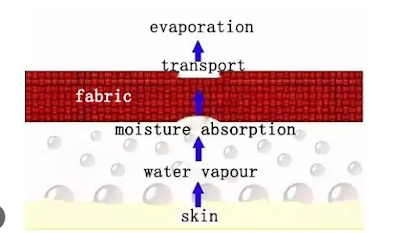Moisture Evaporation in Fabrics
Moisture evaporation in fabrics is a critical process that influences the comfort, performance, and durability of various textiles. Understanding how moisture evaporates from fabrics is essential for optimizing clothing performance, enhancing comfort, and designing functional materials. In this article, we will explore the phenomenon of moisture evaporation in fabrics, its underlying mechanisms, and its practical implications.
The Importance of Moisture Evaporation in Fabrics
Moisture evaporation in fabrics plays a crucial role in maintaining comfort during physical activities, regulating body temperature, and preventing discomfort caused by sweat accumulation. Fabrics that effectively manage moisture evaporation are highly sought after in sportswear, outdoor apparel, and everyday clothing.
Mechanisms of Moisture Evaporation
Moisture evaporation from fabrics occurs through a process known as diffusion, wherein water molecules move from regions of higher concentration (within the fabric) to regions of lower concentration (the surrounding environment). Several factors influence the rate of moisture evaporation in fabrics:
Fabric Structure: The structure of the fabric, including its fiber composition, weave, and surface texture, affects its ability to absorb and release moisture. Fabrics with high porosity and surface area tend to facilitate faster evaporation.
Temperature and Humidity: Higher temperatures and lower humidity levels accelerate moisture evaporation from fabrics. Warmer environments provide more energy for water molecules to transition from a liquid to a gaseous state, speeding up the evaporation process.
Air Flow: Adequate airflow around the fabric enhances moisture evaporation by carrying away evaporated water molecules from the fabric's surface. This is why hanging clothes outside on a windy day results in faster drying times compared to still indoor environments.
Practical Implications
Understanding the mechanisms of moisture evaporation in fabrics has practical implications for both consumers and manufacturers:
Performance Apparel: Sportswear and outdoor apparel manufacturers can utilize moisture-wicking fabrics that efficiently manage moisture evaporation to enhance wearer comfort during physical activities.
Textile Design: Fabric designers can engineer materials with specific fiber compositions, weaves, and surface treatments to optimize moisture evaporation properties for different applications.Comfort and Durability: Clothing brands can prioritize fabrics that balance moisture evaporation with other properties such as softness, durability, and breathability to enhance overall comfort and garment lifespan.
Conclusion
Moisture evaporation in fabrics is a complex yet essential process that influences the performance, comfort, and durability of textiles. By understanding the underlying mechanisms of moisture evaporation and its influencing factors, both consumers and manufacturers can make informed choices in selecting and designing fabrics that optimize moisture management for various applications. Whether it's staying dry during a workout or ensuring comfort throughout the day, the science of moisture evaporation in fabrics continues to drive innovation in the textile industry.



0 Comments